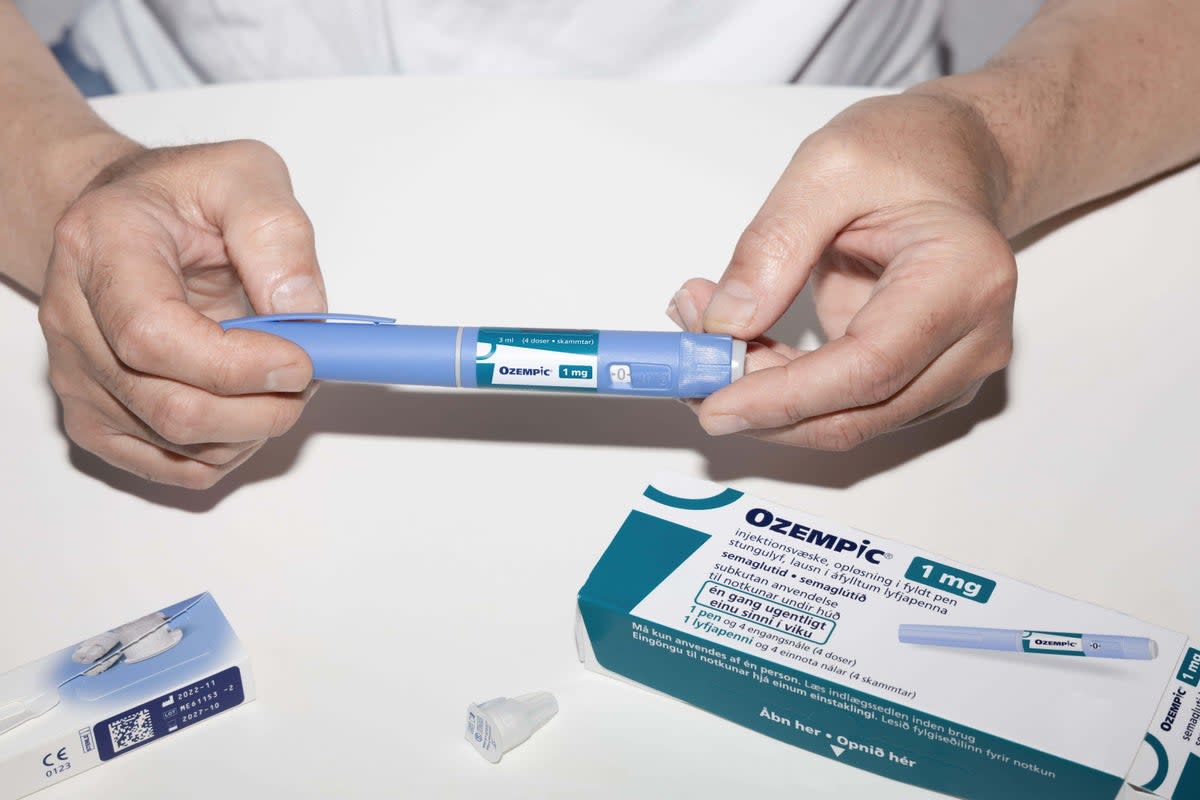Ozempic weight loss drug linked to higher risk of eye condition that causes blindness

Patients prescribed popular drugs Ozempic or Wegovy for weight loss or diabetes have a higher risk of developing a potentially blinding eye condition, a study has found.
Researchers at Massachusetts Eye and Ear hospital found that people who were overweight or obese who were prescribed semaglutide, the active ingredient in both drugs, were seven times more likely to be diagnosed with NAION.
NAION is the second-leading cause of optic nerve blindness but remains relatively rare, affecting 10 out of 100,000 people. It is thought to be caused by reduced blood flow to the optic nerve head and causes permanent visual loss in one eye. There is currently no effective treatment.
Semaglutide was originally developed to treat type 2 diabetes but it has recently become a popular weight loss drug.
Health experts say it could play a key role in reducing obesity rates in the UK, which have reached record highs.
Researchers at Massachusetts Eye and Ear were inspired to conduct the study after three patients in their practice taking semaglutide were diagnosed with vision loss from NAION in a week.
The team analysed the records of more than 17,000 patients treated over the six years since Ozempic was released and divided the patients in those who were diagnosed with either diabetes or obesity.
They compared patients who had received prescriptions for semaglutide compared to those taking other diabetes or weight loss drugs.
Analysis of NAION diagnoses in both groups revealed that those taking semaglutide were at significantly higher risk of developing the condition.
Among 16,827 patients, 710 had type 2 diabetes, with 194 prescribed semaglutide.
Some 979 patients were overweight or obese, with 361 prescribed semaglutide.
In people with type 2 diabetes, 17 NAION events occurred in patients prescribed semaglutide compared to six on other diabetes drugs.
Over three years, 8.9 per cent people on semaglutide had NAION compared to 1.8 per cent on the other drugs, the researchers found.
Joseph Rizzo, director of the Neuro-Ophthalmology Service at Massachusetts Eye and Ear and co-author of the study, said: “The use of these drugs has exploded throughout industrialised countries and they have provided very significant benefits in many ways, but future discussions between a patient and their physician should include NAION as a potential risk.
“It is important to appreciate, however, that the increased risk relates to a disorder that is relatively uncommon.”
Researchers stressed that the study did not prove why the drugs have a link to the condition and that Massachusetts Eye and Ear sees an unusually high number of people with rare eye diseases.
Graham McGeown, honorary professor of physiology at Queen’s University Belfast, said the authors had acknowledged there were limitations to the study.
But he said: “This research does suggest an association between semaglutide treatment and one form of sight-threatening optic neuropathy, but this would ideally be tested in larger studies.
“Given the rapid increase in semaglutide use and its possible licensing for a range of problems other than obesity and type 2 diabetes, this issue deserves further study, but possible drug side-effects always need to be balanced against likely benefits.”
A spokesperson for Novo Nordisk, the company that manufactures Ozempic and Wegovy, said: “Patient safety is a top priority for Novo Nordisk, and we take all reports about adverse events from use of our medicines very seriously.
“Nonarteritic anterior ischemic optic neuropathy (NAION) is not listed as a known adverse drug reaction in the Summary of Product Characteristics (SmPC) for the marketed formulations of semaglutide (Ozempic® and Rybelsus® for type 2 diabetes and Wegovy® for weight management) as per the approved labels.”


